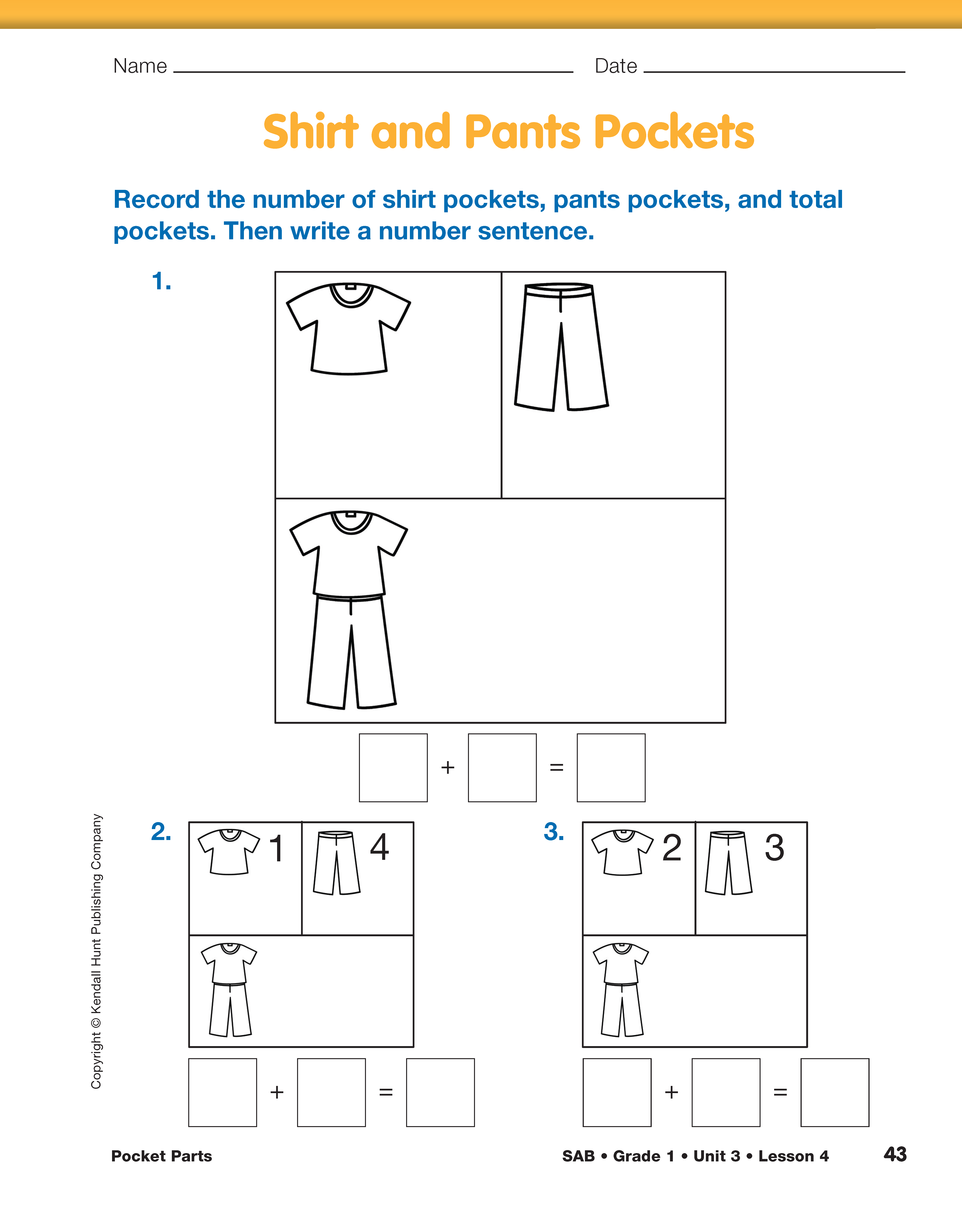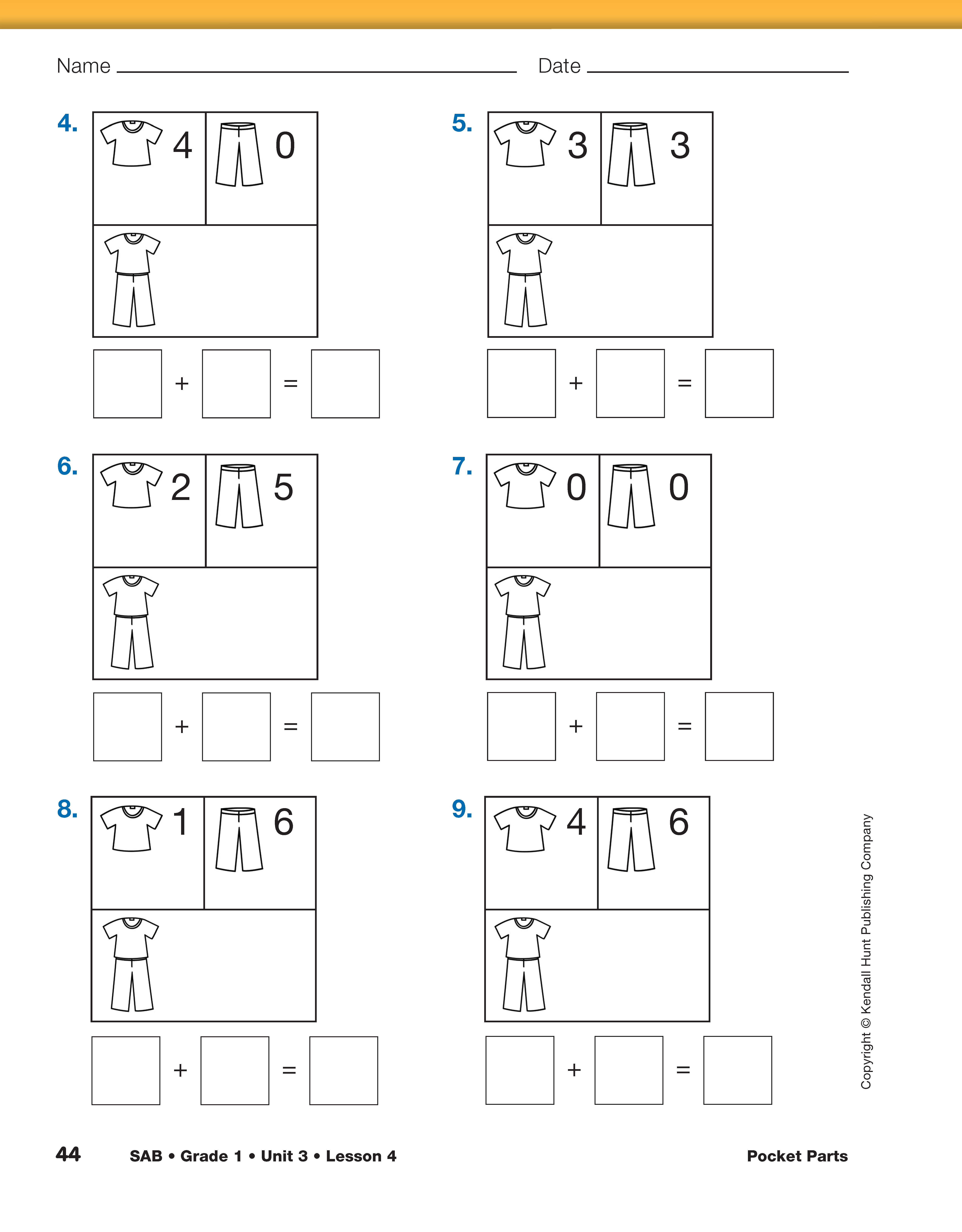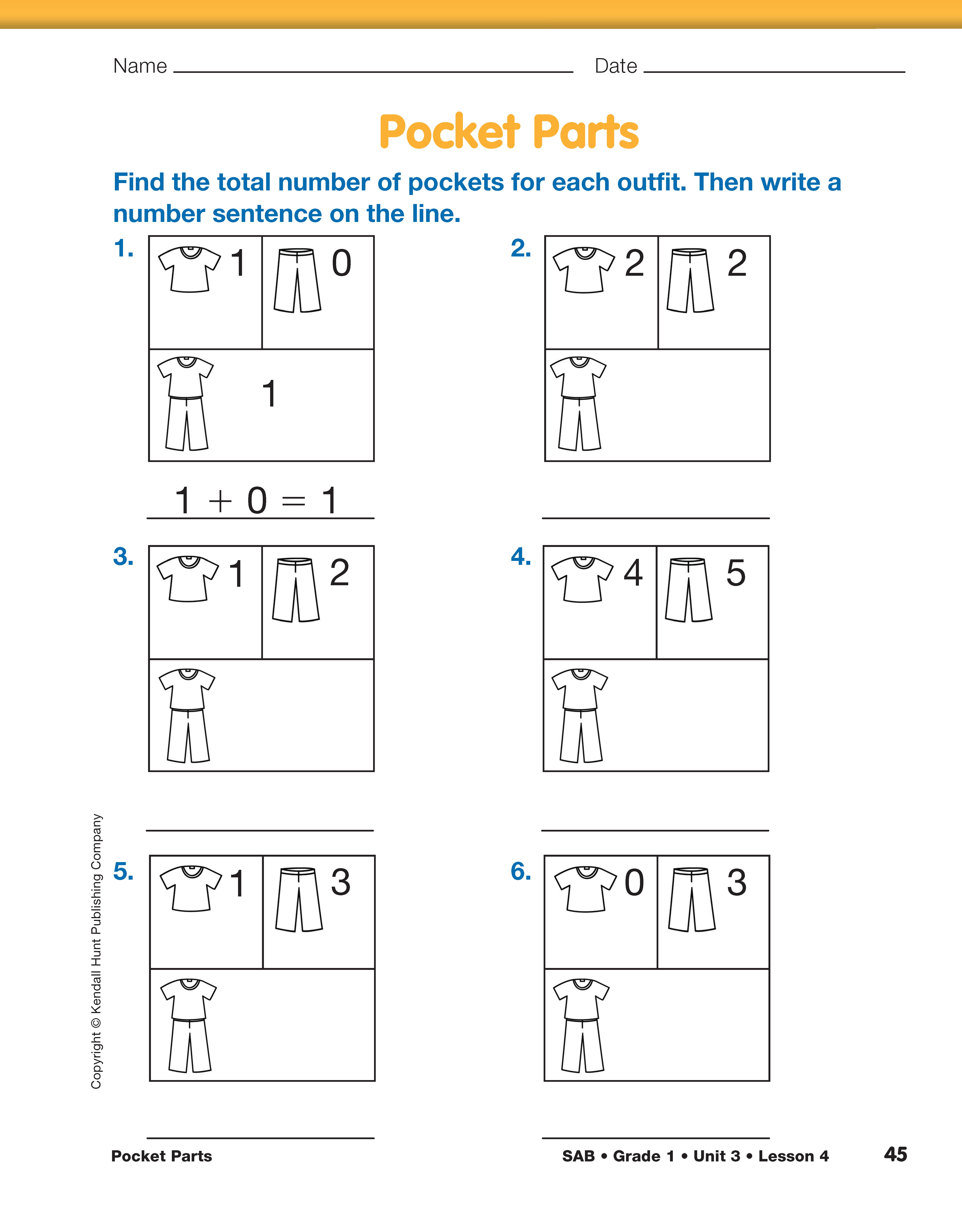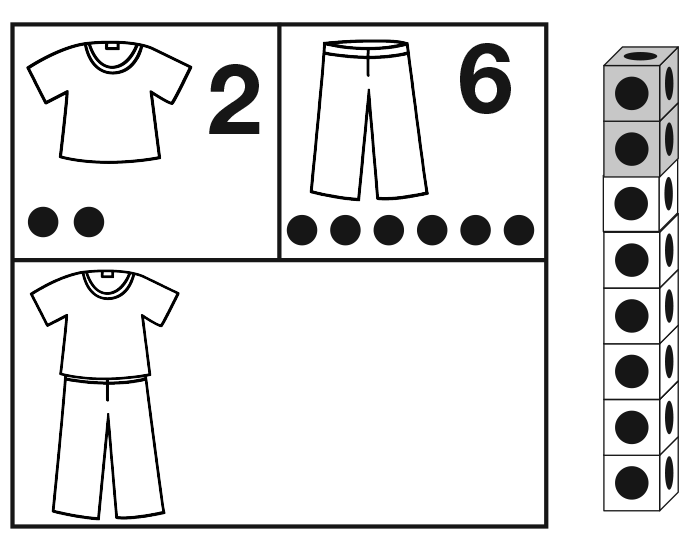Pocket Parts
Est. Class Sessions: 2Developing the Lesson
Part 1: Combining Two Parts and Finding the Whole
Ask students to make a cube train using one color for the number of their shirt pockets and another cube train using a second color of the number of their pants pockets. Have students join the two trains. This represents the total number of pockets.
Ask students to turn to Question 1 on the Shirt and Pants Pockets pages in the Student Activity Book and record the number of shirt and pants pockets they counted on their clothes and with their cube trains. Ask each student to write a number sentence representing the number of pockets on his or her clothing. As an example, write a number sentence for the number of pockets on your clothing on a display of the pages.
Ask several students to explain to the class how many shirt pockets, pants pockets, and total pockets they have. Also ask them to share their number sentences.
Have students complete Questions 2–3 to practice finding the total number of pockets and writing number sentences on the Shirt and Pants Pockets pages in the Student Activity Book using various strategies. See Figure 2. Students may complete these individually or with a partner. Discuss Questions 2–3 with the class before asking students to complete the page. See Sample Dialog 1 to guide discussion of Questions 2–3.
Assign the Pocket Parts page in the Student Activity Book. Note that students write number sentences on lines on these pages.




















